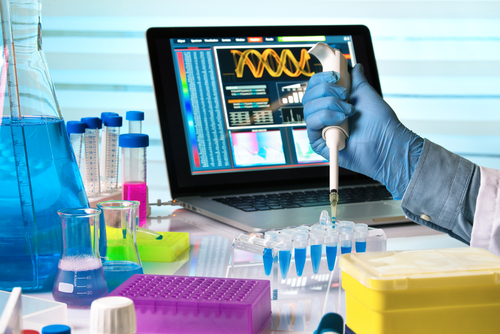Gene Therapy May One Day Lead to Cure for AADC Deficiency, Review Suggests

angellodeco/Shutterstock
A recent report reviewing the use of gene therapy for Taiwanese patients with aromatic l‐amino acid decarboxylase (AADC) deficiency suggests that such strategies may one day lead to a cure for this condition.
The report, “A review of aromatic l‐amino acid decarboxylase (AADC) deficiency in Taiwan,” was published in American Journal of Medical Genetics.
AADC deficiency is caused by mutations in the DDC gene, which encodes an enzyme necessary for the production of neurotransmitters, such as dopamine and serotonin.
The deficiency is rare, with just over 100 cases reported worldwide, but the greatest prevalence of it is among Chinese and Taiwanese patients because of a common mutation in these populations.
The most common mutation in Taiwanese patients, for example, results in a change in splicing — essentially, the cell’s protein-making machinery skips part of the gene when it makes the protein, resulting in a protein that doesn’t work correctly.
This mutation, affecting 76% of patients, causes the most severe cases, with patients having profound motor deficits, low muscle strength, involuntary eye movement, and droopy eyelids.
Because the disease is caused by a deficiency in a single gene, gene therapy has been regarded as a promising approach for these patients. In AADC deficiency, gene therapy strategies have been tried on patients since 2010.
The essence of gene therapy for patients with AADC deficiency is to deliver a functional version of the DDC gene to the patients’ cells, thus — at least, in theory — allowing them to make a functional protein and curing the disease. These genes are usually delivered through lab-generated viral vectors, which can be tailored to deliver their payload only to specific cell types.
A Phase 1/2 clinical trial (NCT01395641) of one such vector, AAV2-hAADC, was conducted in 2014. The trial included 10 patients, one of whom died from an infection 10 months after treatment. The remaining patients, however, showed marked improvements in motor skills, as well as more normalized neurotransmitter levels.
This treatment, however, requires that the gene therapy be delivered directly into the putamen — the part of the brain that controls movement. In addition to being an invasive procedure, it targets only the motor deficits in these patients, and does not correct the AADC enzyme in other brain regions.
Thus, researchers have developed mice models carrying the most common DDC mutation and have been working to develop gene therapies that may be delivered through less invasive approaches to restore AADC function more broadly.
For example, one viral vector improved motor function in mice, but these mice were more hyperactive — a possible side effect of excess dopamine production as a result of the therapy. A different vector, tailored to more carefully target specific types of cells, had similar effects on motor activity without inducing this hyperactivity.
Experiments such as these, as well as further studies in human patients, may one day allow refined gene therapy for patients with AADC.
“The success of intraputamen gene therapy is a promising ray of light for these patients, and we believe that research in this area will lead to a cure for them in the future,” the researchers concluded.






